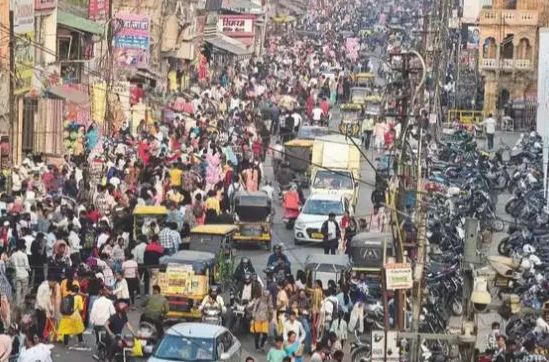Shopping on Sitabuldi Main Road in Nagpur remains difficult due to the large number of street vendors. Unfortunately, there hasn’t been any solution to this problem yet.
Sitabuldi Main Road in Nagpur remains a battleground between established shopkeepers and a surge of street hawkers, creating a perpetual headache for both shoppers and officials. Over the past three decades, the number of hawkers has skyrocketed from 70 to a daunting 700, intensifying the conflict over dwindling business. Despite court rulings designating the area as a non-hawking zone and the enactment of the Street Vendors Act, enforcement has faltered.
The conflict between shopkeepers and street hawkers began thirty years ago and has led to a significant increase in the number of hawkers. This has intensified competition with shopkeepers, as hawkers offer lower prices, attracting customers away from established stores. Despite court orders and efforts by authorities, little progress has been made. In 2000, the court declared Sitabuldi Main Road a no-hawking zone, and Maharashtra adopted the Street Vendors Act in 2014. Rule 11 of the 2016 Maharashtra Street Vendors Rules outlines the formation of the Town Vending Committee, chaired by the Municipal Commissioner.
In October 2001, the Nagpur Municipal Corporation designated Sitabuldi Main Road as a no-hawking zone as part of its policy. In 2016, the Traffic Department of Nagpur Police objected to hawking near Sitabuldi Temple Bazaar, Buty Hospital, and Sitabuldi Main Road, citing potential traffic disruptions and law enforcement concerns.
The unchecked growth of hawkers has strained relations between shopkeepers and vendors and created difficulties for shoppers and authorities. This conflict not only impacts shopkeepers’ livelihoods but also poses potential safety and order issues for the public.
👉 Click here to read the latest Gujarat news on TheLiveAhmedabad.com





